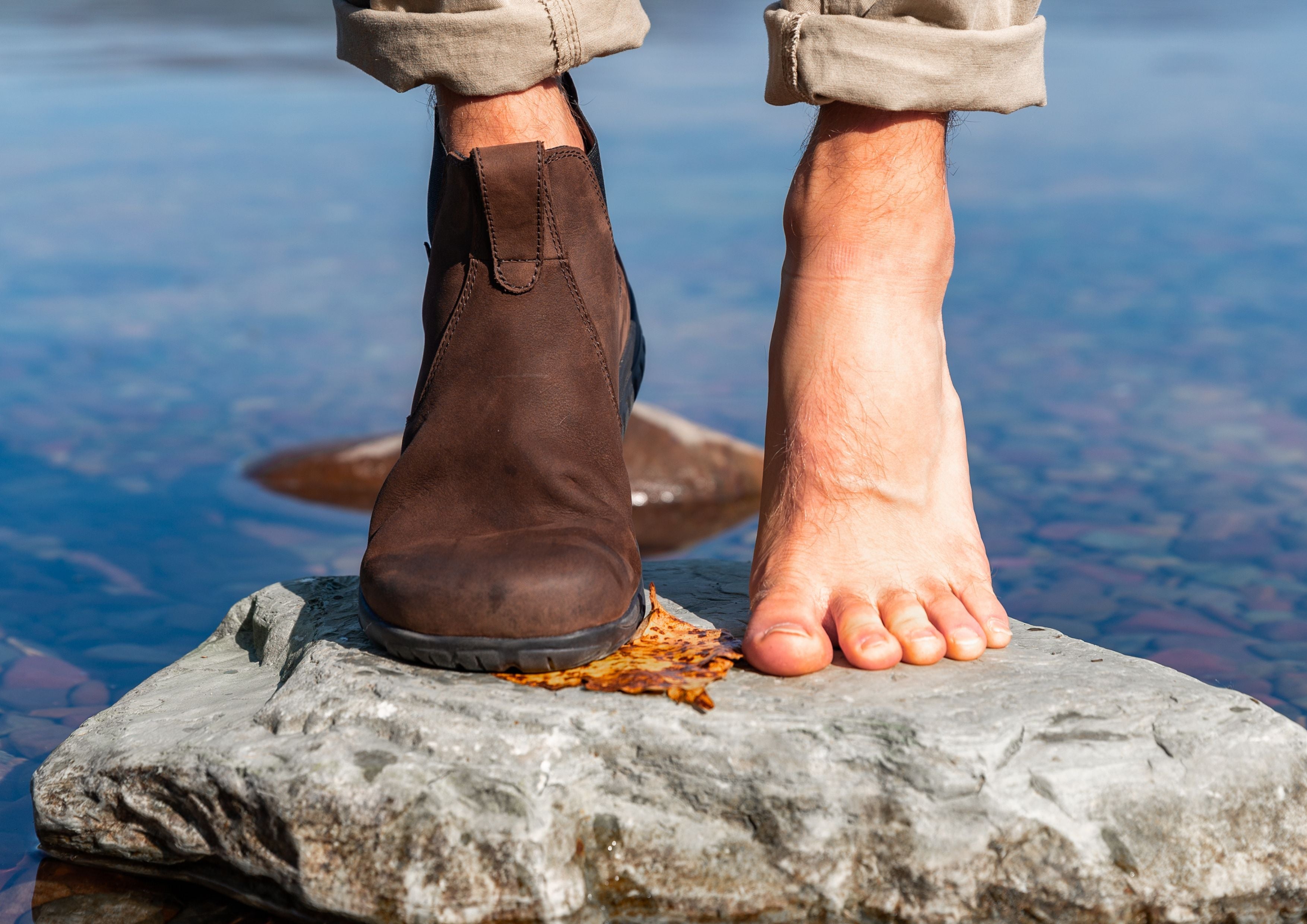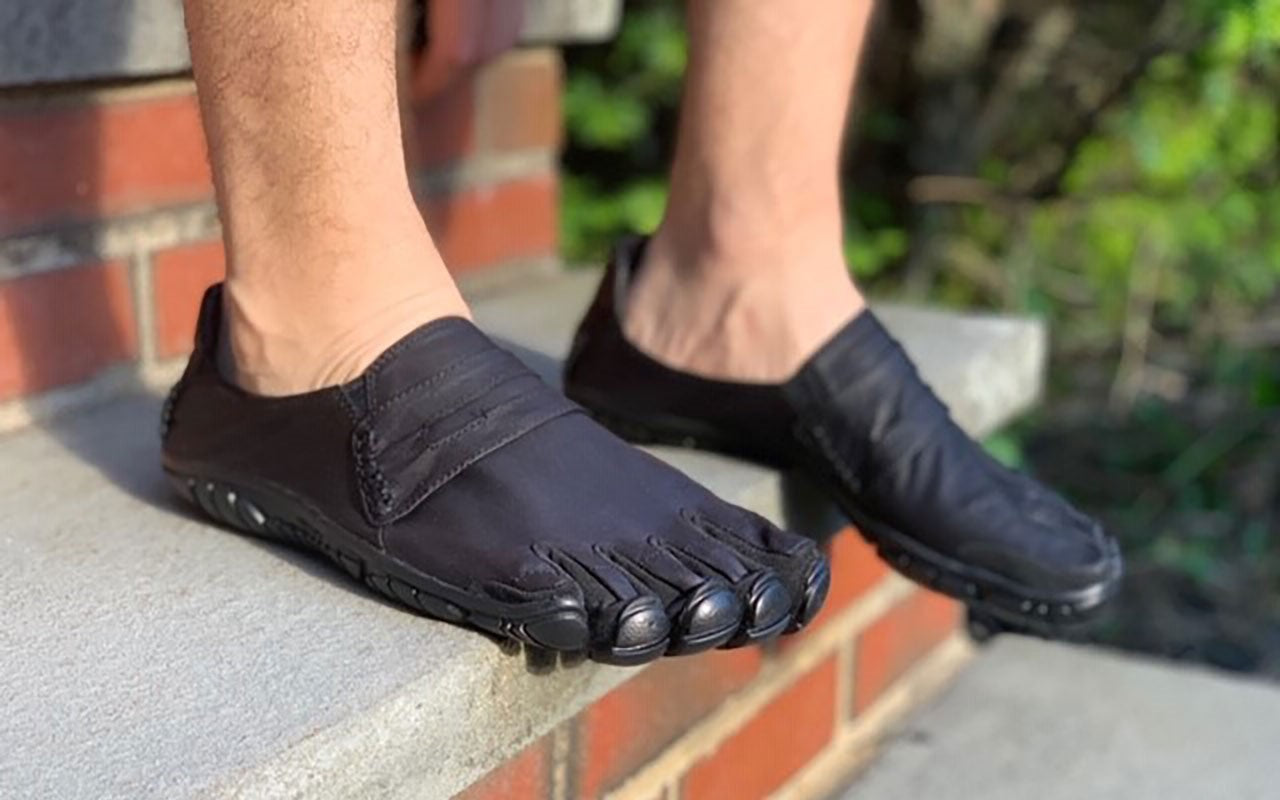Article: Footwear Archaeology: Uncovering the History of Outdoor Shoes

Footwear Archaeology: Uncovering the History of Outdoor Shoes

Footwear is more than just a functional necessity; it is a reflection of our history, culture, and the environments we live in. The shoes we wear today on our outdoor adventures have evolved over millennia and have been shaped by countless generations' needs and innovations. By delving into archaeological records and historical texts, we can uncover the fascinating history of outdoor shoes and how they have developed into the diverse range of styles and technologies we enjoy today.
Join Lems on a journey through time to explore the history of outdoor footwear. From ancient sandals to modern hiking boots, we trace the evolution of shoes designed for the outdoors.
Footwear from ancient times: From sandals to moccasins
The history of outdoor shoes dates back to ancient civilizations, where footwear served both practical and symbolic purposes. In Egypt, sandals made from papyrus and palm leaves were worn by both common people and royalty to protect against the hot desert sand. These sandals were often decorated with intricate patterns that highlighted the craftsmanship of the time.
In the same way, the Romans wore "caligae," sturdy sandals with thick leather soles and straps, which were ideal for marching long distances. These shoes were an essential part of the Roman soldier's uniform, emphasizing the importance of durable footwear in ancient military campaigns.
In North America, Native American tribes made moccasins from soft leather or deerskin, known for their comfort and flexibility. Moccasins were suitable for crossing various terrains, allowing the wearer to feel the ground beneath their feet – a design feature that would later influence modern minimalist footwear.
All around the world, ancient cultures developed footwear that reflected their unique environments and lifestyles. Whether they were trekking through deserts, marching into battle, or hunting in forests, ancient outdoor shoes were a testament to human ingenuity and adaptability.
Medieval and Renaissance Footwear: Transition to Thicker Soles
As civilization developed, the design and construction of outdoor footwear also evolved. In medieval Europe, shoes became more than just protective footwear; they were a symbol of social status and occupation. Craftsmen developed specialized footwear for various activities, such as hunting, riding, and work.
During the Renaissance, advances in shoemaking led to the introduction of more durable materials and construction techniques. Shoes began to feature sturdier soles made of leather or wood, providing better support and protection for outdoor activities. The increasing trade and exploration also influenced shoe design, as adventurers sought footwear that could withstand long journeys and varied terrain.
A remarkable example of Renaissance footwear is the "poulaine," a shoe with an elongated, pointed toe that was fashionable among the nobility. Although it was not practical for outdoor activities, the poulaine reflected the extravagance and artistry of the time and showcased the intricate details that could be achieved in shoemaking.
By the end of the Renaissance, shoes had evolved from simple coverings to complex craftsmanship. The foundation laid during this period was to pave the way for the further development of outdoor footwear in the centuries to come.
Den Industrial Revolution: The Birth of Modern Outdoor Shoes
The industrial revolution brought significant changes to the production and design of footwear and marked a decisive moment in the history of outdoor shoes. The invention of machines and the use of standardized manufacturing processes revolutionized the shoe manufacturing industry and made shoes more affordable and accessible to the masses.
During this period, the introduction of rubber in the production of shoe soles was a game-changer. Rubber provided better grip and durability, making the shoes more suitable for outdoor activities. This innovation paved the way for the development of specialized outdoor footwear, such as hiking and exploration boots.
One of the most iconic outdoor shoes that emerged during the Industrial Revolution was the "Chelsea boot." The Chelsea boot was originally designed for Queen Victoria and featured a low heel and elastic side panels, making it easy to put on and take off – a practical choice for outdoor activities.
During the Industrial Revolution, several sports and leisure activities also emerged, leading to the development of sports shoes. These early sports shoes laid the foundation for the modern sneaker, which became a staple of outdoor footwear in the 20th century.
At the end of the 19th century, the stage was set for mass production of outdoor shoes, marking the beginning of a new era in footwear design and innovation.
The 20th Century Innovations: From Boots to Sneakers
The 20th century brought a revolution in outdoor footwear, where advances in technology and materials led to the development of a wide range of specialized shoes. During this period, hiking boots emerged, designed to provide stability and support on uneven terrain. These boots featured innovations such as waterproofing and ankle support, making them ideal for outdoor enthusiasts.
As outdoor activities became more popular, the demand for comfortable and durable footwear also increased. This led to the development of sports shoes specifically designed for sports and leisure activities. Brands like Lems Shoes embraced this trend and innovatively combined design with a focus on foot health to create shoes that met the needs of outdoor enthusiasts.
Lems Shoes, known for their minimalist approach to footwear, drew inspiration from the past while embracing modern technology. Their shoes feature wide toe boxes and zero-drop soles, allowing for natural foot movement and adaptation. This design philosophy reflects a growing trend in outdoor footwear towards more minimalist and functional designs that emphasize comfort and performance.
In the 20th century, outdoor shoes evolved from simple protective gear to high-performance equipment thanks to innovations in design and materials. Lems Shoes continues this tradition and pushes the boundaries of outdoor footwear with their unique approach to design and commitment to foot health.
Conclusion
The history of outdoor shoes is a testament to human ingenuity and adaptability. From the simple sandals of ancient civilizations to today's high-performance footwear, outdoor shoes have evolved to meet the needs of people exploring the world around them.
Throughout history, footwear has been more than just a practical necessity; it has been a reflection of culture, technology, and lifestyle. Each era has brought its own innovations and trends that have shaped the design and functionality of outdoor shoes.
Today, brands like Lems Shoes continue this legacy of innovation by creating footwear that not only performs well in outdoor environments but also promotes foot health and natural movement. By understanding the history of outdoor shoes, we can gain a deeper appreciation for the shoes we wear and the journeys they take us on.
When we lace up our hiking boots or put on our sneakers, let us remember the long history behind these seemingly simple pieces of footwear. They are a reminder of our enduring connection to nature and the many adventures that await us.

